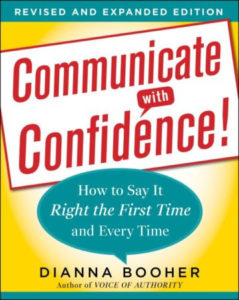
Communication Habits That Drive Customers Crazy—And How to Stop Them!
My last few interactions as a customer have traumatized me. For three nights, the conversations have replayed in my head for hours of fitful drama with the ceiling.
My fear: These are not isolated incidents but rather routine communication habits that have grown deeper under the cover of COVID complications: remote work, little or no frontline supervision, less accountability, more stress.
What can you do about the problem? Play the part of mystery shopper occasionally to check out your own department and organization. Reassess how your own team handles customer (internal and external) interactions. Consider the putting into practice the specific tips you’ll find at the end of this blog.
The Shockingly Crazy Customer Service Communication and Conundrum
Here’s my recent customer-service communication incident as it unfolded with 3 different entities pulled into one customer interaction loop: (Names of players have been changed to protect the guilty.)
- My dad needs a hearing aid. So I call Gotcha Hearing Aid Center and talk with an agent to get general information about brands, costs, hearing test, and process for insurance reimbursement. The agent says that although Gotcha doesn’t file insurance, buyers simply file for themselves, and they find that insurance reimbursement is never an issue.
- I call my ABC insurance company to verify that they typically reimburse for Gotcha hearing aids. Yes, the insurance agent assures me that they reimburse. But she emphasizes that Gotcha must sign a specific form saying they are the supplier and provide the Gotcha tax ID. The insurance agent emails me the form to take to Gotcha when buying the hearing aids.(All good so far, or so I thought! Little did I know what was about to happen!)
- Two days before Dad’s appointment for the hearing test, Gotcha calls with the appointment reminder. “Please be aware that all patients must have their ears professionally cleaned before they come in for the hearing test.” (That meant we had to reschedule the Gotcha hearing test, and first make an appointment with an ENT doctor—a little detail the scheduler forgot to mention earlier!)
- Dad goes to the ENT doctor for a cleaning and just decides on the spur of the moment (fortunately) to have the ENT doctor do a hearing test. (Gotcha has never mentioned that he’ll need this diagnosis later. Gotcha has never mentioned this second detail either—that he’ll need the ENT to give a diagnosis later for insurance purposes.)
- I take Dad to Gotcha to choose hearing aids. Gotcha gives him their hearing test, showing “moderate to severe” loss. We start to buy the hearing aids. Gotcha says they will not sign the ABC insurance form, verifying they’re the supplier. They state they can’t give a diagnosis. We tell them we’re not asking them for a diagnosis—that we’ve already been to an ENT and have a diagnosis of hearing loss. Gotcha insists that we must go BACK to ENT doctor again and ask him to sign the ABC insurance form as the “supplier.”
- I drive back across town to the ENT doctor’s office, show the office manager the insurance form, and ask if she’ll have the doctor to fill in the diagnosis code, and sign the insurance form. The office manager asks, “Where’s the form Gotcha sent with you? Gotcha always sends a form to collect that information. We can’t provide the insurance form until Gotcha sends THEIR form to us..”
- I call Gotcha back and get voicemail. I leave the ENT office manager’s response.
- The supervisor of the Gotcha’s Hearing Aid department responds to my voicemail: “Your ENT doctor’s office manager is wrong. We don’t have any form to send them. I’ve already told you how Gotcha does business. Maybe Gotcha’s just not the best option for you to buy hearing aids!”
- My response: “I’m coming back to your store to buy the hearing aids. They work well for my dad. If the insurance company does not reimburse because you refuse to sign their form saying you supplied the hearing aids, then I’ll be returning them for a refund.”
- I return to the Gotcha store. The supervisor has a 4-page purchase order ready for me to sign. (How ironic! She wants me to sign her form, but she’s refusing to sign the insurance company’s form!) I ask if she realizes how frustrating it is to get this kind of run-around. She cuts me off mid-sentence, rolls hey eyes, and states, “This is the way Gotcha does business. We do a PO. We do not sign your insurance form as supplier. Are you good with this PO and ready to place the order? Or do you want to go buy the hearing aids someplace else?” (My response: “I’m ready to place the order, but I’m definitely not good with the way this whole situation has been handled.”)
- She calls the store manager.
The store manager joins us and actually listens to details of the run-around. Then he apologizes profusely. He reviews the ABC insurance form and concludes that there is no reason Gotcha cannot sign the insurance form.
Ordeal over.
The goose chase and uproar—all an unnecessary hassle over multiple frontline agents’ miscommunications and their supervisor’s failure to observe and care!
How to Stop Crazy Customer-Service Communication Mishaps
Here’s how communication problems diagnosed throughout this traumatizing interaction apply to your own internal or external customer situations:
- Listen to what customers are saying. Give complete answers to what they’re asking—not what you think they’re asking because it sounds like similar questions that day or week.
- Avoid talking over customers or cutting them off simply because you’re in a hurry.
- Assume details get garbled or lost between agents. Understand that when customers are forced to talk to different agents on different visits or calls, your agents often assume that key information has been passed on to the customer in previous conversations. Often, that’s not the case.
- Take ownership of a problem. Instead, of sending customers on a wild-goose chase to determine why they’re getting conflicting information, investigate yourself. Obviously, if two entities are giving customers seemingly opposite information, someone is incorrect or has misunderstood the question or the issue.
- Acknowledge the seriousness of miscommunication issues. A cursory “Sorry for any inconvenience this has caused you” falls far short in making up for hours of wasted time, delays in meeting related deadlines, and frustration caused by a problem.
- Sift the arrogance from the tone of voice and body language. Customers will be turned off just as quickly by a bad attitude as lack of clear communication.
- Follow up. Check back with the customer to see that the situation has been resolved. Close the loop.
- Realize that the “way you do business” is not necessarily the way everyone does business—it may not even be the way everyone in your OWN department or organization does business. Different divisions and locations may have different protocols. Never convey the message, “It’s our way or the highway.”
If you serve the customer directly, remind yourself daily of these best communication practices. If you supervise or train others who serve customers directly, never assume your team members are the exception.
Like top athletes, strive never to forget the fundamentals.
Learn more ways to improve customer communication with Communicate With Confidence!: How to Say It Right the First Time and Every Time.

Get more tips delivered to your inbox, click here to subscribe to Dianna’s ezine.




